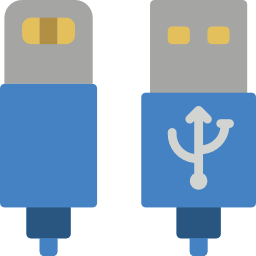
Understanding PoE Injectors and Splitters in Network Hardware Components
Power over Ethernet (PoE) technology has become a fundamental part of modern network infrastructure, enabling the delivery of both power and data through a single Ethernet cable. Two critical hardware components that support this technology are PoE injectors and PoE splitters. These devices are especially useful in scenarios where standard network equipment does not natively support PoE. Understanding how they work, their use cases, cost implications, and differences is essential for network designers, IT professionals, and system integrators.
PoE Injector Overview
A PoE injector is a hardware device that adds electrical power to an Ethernet cable. It allows network devices such as IP cameras, wireless access points, or VoIP phones to receive power and data over the same cable, simplifying installations and reducing the need for additional electrical wiring. This is particularly useful when the network switch does not support PoE natively.
Main Applications of PoE Injectors
Powering devices in remote or hard-to-reach locations where electrical outlets are limited or unavailable
Supporting older switches or routers that do not have built-in PoE functionality
Simplifying installation by minimizing the number of required cables
Reducing overall infrastructure cost by eliminating the need for dedicated power supplies
Enabling centralized power control for connected devices through PoE-compatible systems
PoE Splitter Overview
A PoE splitter is a complementary device to the injector. It is used at the other end of the Ethernet cable, where a powered device does not support PoE natively. The splitter separates the power and data into two outputs: one Ethernet output for data and a power output through a dedicated DC connector. This allows non-PoE-enabled devices to benefit from the convenience of PoE installations.
Main Applications of PoE Splitters
Connecting legacy network devices that require separate power inputs
Retrofitting older hardware into modern PoE-supported infrastructures
Providing flexible installation options for devices without PoE support
Ensuring compatibility with low-voltage devices like small switches, routers, or media players
Maintaining clean and minimal cable setups in professional environments
Cost and Accessibility
PoE injectors and splitters are not free; they are commercial hardware products that must be purchased. Their prices can vary based on quality, brand, power standards (such as IEEE 802.3af, 802.3at, or 802.3bt), and additional features like surge protection or gigabit support. Despite the cost, they offer a cost-effective alternative to upgrading entire network switches to PoE-enabled versions, particularly when only a few devices need PoE support.
Key Differences and Considerations
A PoE injector is used to send power and data through an Ethernet cable to a PoE-compatible device.
A PoE splitter is used to extract power and data from a PoE-enabled cable for use with non-PoE devices.
Injectors are typically installed near the network switch or router, while splitters are installed close to the end device.
Injectors are useful when the network switch lacks PoE functionality; splitters are essential when the end device lacks PoE support.
Compatibility with voltage and power requirements is essential when selecting splitters to avoid damage to the devices.
Some injectors support multiple ports for high-density environments, while splitters are generally designed for single-device use.
Use Case Scenarios
In a warehouse with ceiling-mounted security cameras, injectors can power the cameras using existing Ethernet cabling, eliminating the need for high-voltage installations.
In an office using older VoIP phones that do not support PoE, splitters can allow these phones to be integrated into a PoE-powered environment.
For outdoor Wi-Fi installations, injectors can be used to power access points located far from power sources.
In smart buildings, a combination of injectors and splitters can help integrate both legacy and modern systems into a unified network.
Conclusion
PoE injectors and splitters are essential components of network hardware that offer flexibility, scalability, and cost-efficiency. They enable the deployment of power and data over a single cable, supporting a range of network devices regardless of whether they natively support PoE. While these components are not free, their cost is often justified by the savings in infrastructure and installation time. Understanding when and how to use each device is critical for building efficient and reliable network systems. As network demands continue to evolve, PoE injectors and splitters remain practical tools in the deployment and expansion of modern network environments.












